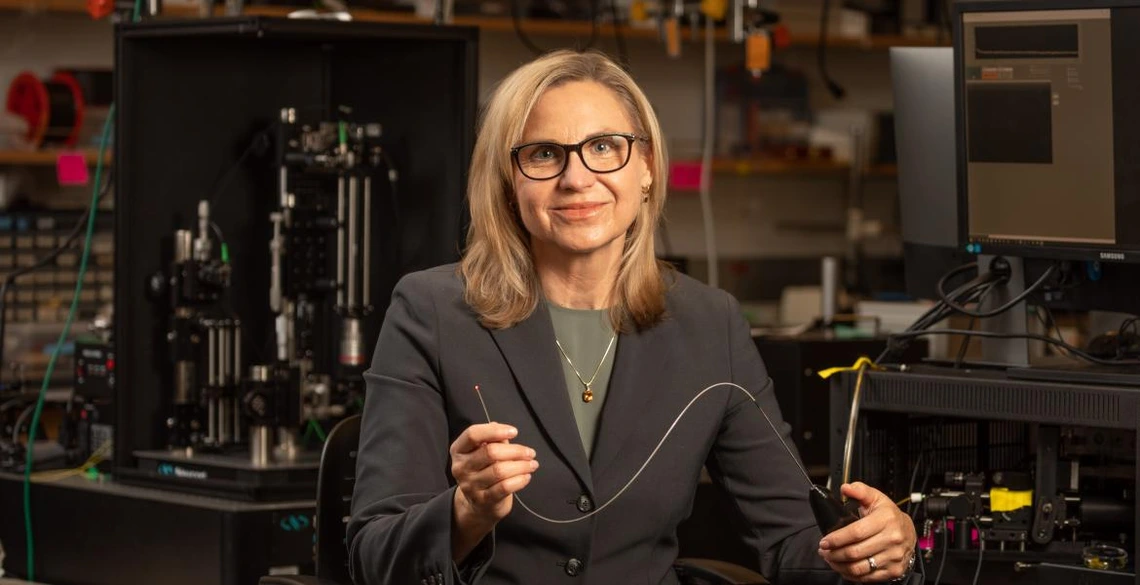Researchers Pilot 'Itty Bitty' Device for Earlier Ovarian Cancer Detection

BME professor and director of the BIO5 Institute Jennifer Barton, has spent years developing a device small enough to image the fallopian tubes – narrow ducts connecting the uterus to the ovaries – and search for signs of early-stage cancer. Dr. John Heusinkveld has now used the new imaging device in study participants for the first time, as part of a pilot human trial.
For the pilot human trial, Heusinkveld is using the falloposcope device to image the fallopian tubes of volunteers who are already having their tubes removed for reasons other than cancer. This will allow researchers not only to test the effectiveness of the device, but also to start establishing a baseline range of what "normal" fallopian tubes should look like. Since September, Heusinkveld has successfully used the falloposcope in four volunteers.
"This is the first endoscope that can fit inside a fallopian tube and actually see anything below the surface with high resolution," said Heusinkveld, an assistant professor of obstetrics and gynecology at the College of Medicine – Tucson and a board-certified specialist in female pelvic medicine and reconstructive surgery in Banner – University Medical Center Tucson's Department of Obstetrics and Gynecology. "We were very pleased with the images the device was able to capture in its first inpatient uses, and we look forward to gathering more data."
At 0.8 millimeters in diameter, the falloposcope's small size and high resolution are unprecedented.
"It's itty bitty," said Barton, who also holds appointments in optical sciences and medical imaging, and is a member of the University of Arizona Cancer Center. "You just couldn't have fabricated something like this, even six, seven years ago."
The American Cancer Society estimates that, in 2022, about 19,880 women in the United States will receive a diagnosis of ovarian cancer, and about 12,810 will die from the disease. Barton hopes her falloposcope will help save the lives of some women and vastly improve quality of life for others.
"The goal here is to show that we can get into the fallopian tubes – which is nontrivial itself – take images, assess the quality of the images and get physician feedback," Barton said. "This study will help establish a baseline of the range of what 'normal' looks like."
